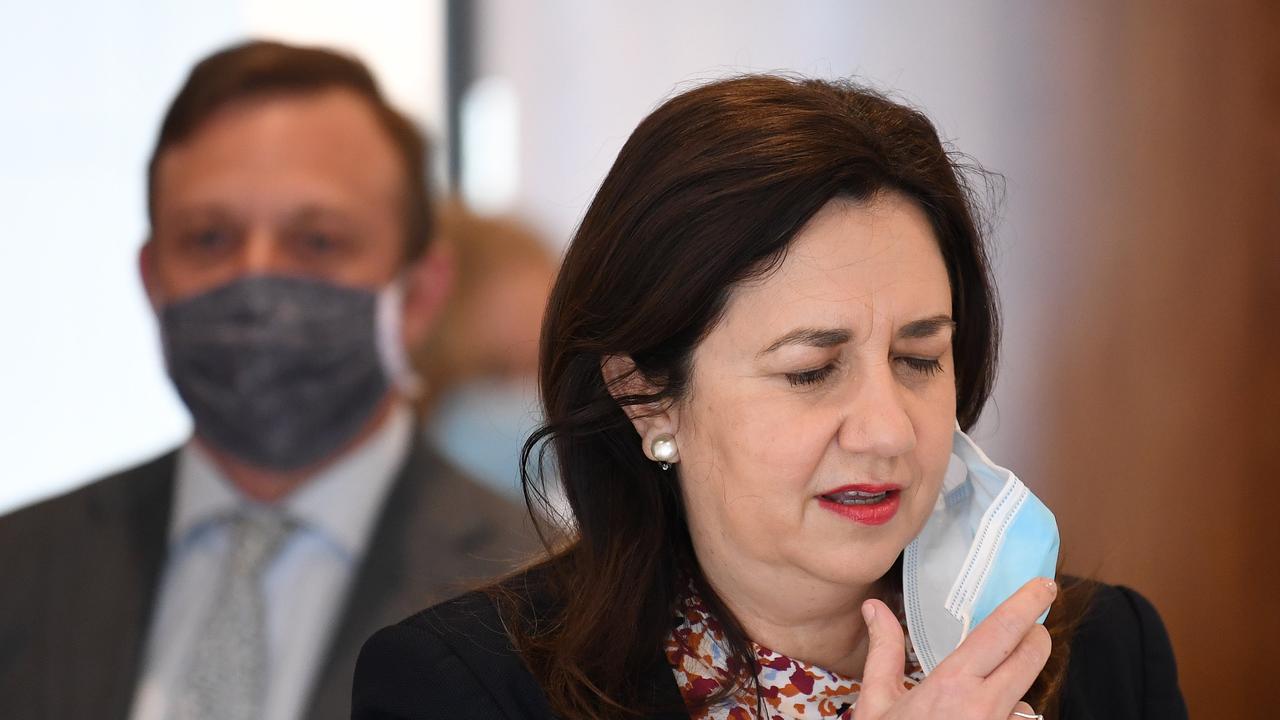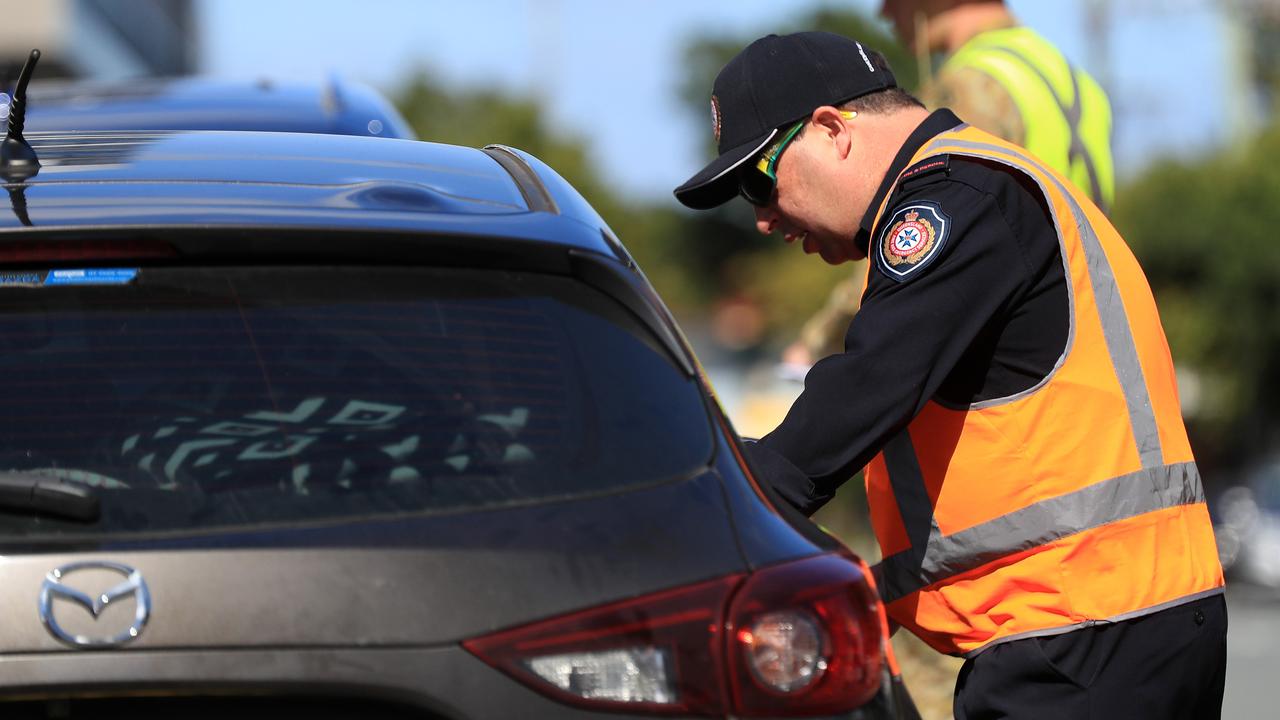Qld COVID-19 death rate less than half the Australian figure and among the best in the world
As the worst pandemic in a century continues to cost lives around the world, the success of Queensland, and Australia, in keeping the death rate low is obvious.

QLD Coronavirus News
Don't miss out on the headlines from QLD Coronavirus News. Followed categories will be added to My News.
QUEENSLAND and Australia have COVID-19 death rates among the lowest in the world as the worst pandemic in a century continues to cost lives.
Six Queenslanders have died after contracting the new virus, all aged in their 60s or older, a number Health Minister Steven Miles describes as “one too many” but realises could have been much worse.
MILLIONS OF DOSES – INSIDE QLD’S HUNT FOR A CORONAVIRUS VACCINE
HOW DEALING WITH FLOODS AND CYCLONES PREPARED QLD FOR PANDEMIC
As a proportion of total infections, about 0.57 per cent of Queensland’s 1045 known cases have died, significantly less than the 1 per cent death rate predicted by Chief Health Officer Jeannette Young in March.

The Queensland case fatality rate is less than half that of Australia as a whole.
Nationwide, 97 people have lost their lives and 6912 people have been diagnosed with the novel coronavirus, a death rate of 1.4 per cent.
New South Wales has recorded the highest number of deaths with 44 out of 3047 confirmed infections, a case fatality rate of 1.44 per cent. More than half of the NSW deaths have occurred in nursing homes.
Deaths as a result of COVID-19 increase from about age 50 and rapidly from age 70 and 80.
Dr Young praised Queensland nursing homes for keeping their facilities free of the virus.
“They have kept their residents safe,” she said. “I think they should be congratulated.”
Tasmania is in the unenviable position of having Australia’s highest COVID-19 death rate at 5.75 per cent, with 13 deaths from 226 known infections.
Of all the Australian states and territories, the Northern Territory has performed best with no deaths from 29 infections.
In the three months since Queensland’s first case of the new virus was diagnosed on January 29, Dr Young said a total of 15 people with COVID-19 had been treated in the state’s intensive care units, including 14 who required ventilation.
One of the patients treated in ICU died.
Dr Young said that compared to China where half of the people who ended up in ICUs with COVID-19 lost their lives.
“We’ve got really good ICUs,” she said.
Queensland’s COVID-19 case fatality rate compares favourably with many other countries. UK deaths as a percentage of known infections is 14.81 per cent; in Italy, 13.88 per cent of known cases have died, Spain’s death rate is 10.15 per cent, in the US it’s 5.95 per cent and China’s is 5.59 per cent.
Few countries can compete with Singapore, which has recorded almost 21,000 infections but just 20 deaths for a case fatality rate of about 0.1 per cent.
Worldwide, about 3.9 million people are known to have been infected with the virus, and more than 270,000 have died – a death rate of 6.91 per cent.
But the numbers fail to tell the full picture.

Pathology testing rates for the coronavirus contagion in Australia, and particularly in Queensland, are among the highest in the world, suggesting more milder cases will be picked up here than in many other countries. That will result in Australia having a lower death rate.
Dr Young said Queensland had so far performed more than 129,000 tests for SARS-CoV-2, the virus that causes COVID-19. That’s about 2393 tests for every 100,000 people.
Testing criteria has recently expanded to include anyone with potential symptoms of the virus, such as a fever, cough, sore throat or breathlessness.
Dr Young remains concerned about the possibility of asymptomatic cases in the community that may be spreading the disease without knowing they even have it.
“Clearly, there are asymptomatic cases for this disease and also, we think now you can transmit the virus for up to 48 hours before you do get symptoms,” she said.
“That’s why quarantine has always been so important. Early on, we had very little information about the disease because it was new.
“We’ve really tried to think about every strategy to help protect us no matter what.
“All those tough decisions that we took early on were actually very sensible and that’s why we’re where we are today.
“The most important thing we all have to do, if we get any symptoms at all, is to go and get tested because then, we can contact trace and get anyone who’s been near that person into quarantine. Then it doesn’t matter if they have asymptomatic disease because they’re in quarantine.”
Mr Miles praised Queenslanders for following public health directives, saying they had contributed to the state’s comparatively low numbers of cases and deaths.
“It’s because of two main reasons Queensland has seen low numbers of cases – our significant preparedness and early action and the hard work of Queenslanders who have stayed home,” he said.
Queensland was the first Australian state to declare a public health emergency as a result of the new virus on January 29.


